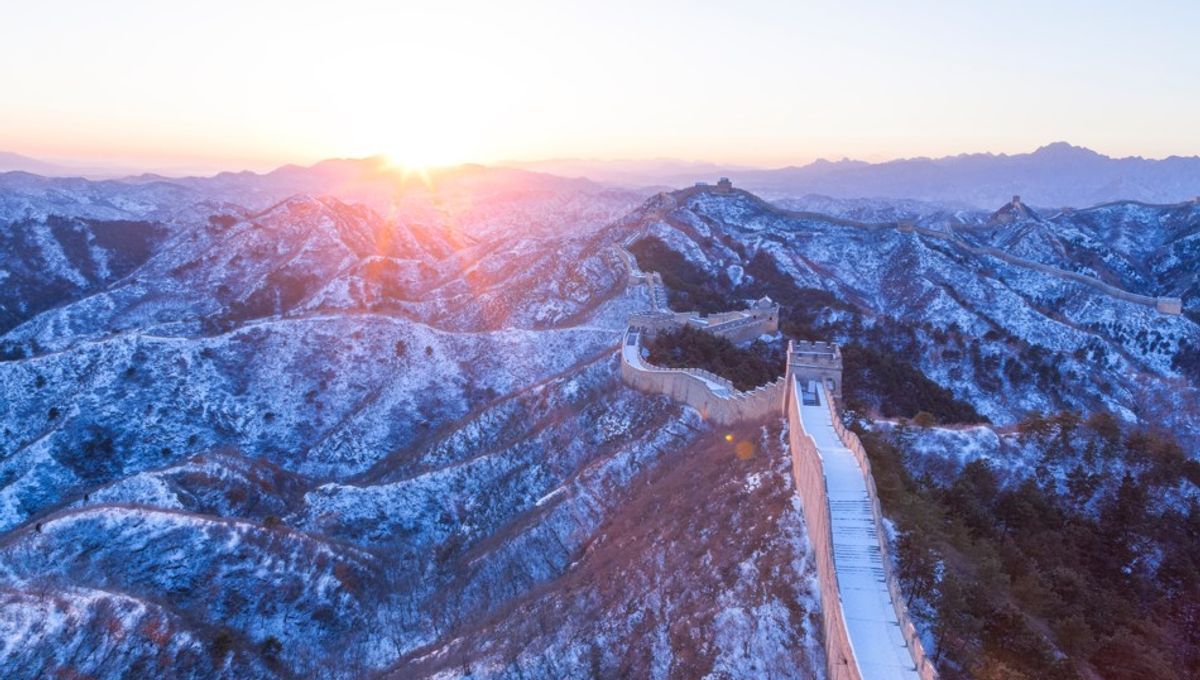
A section of the Great Wall of China that extends into Mongolia has been analyzed for the first time, allowing researchers to present some speculative insights into the history and function of this enormous structure. Spread over 405 kilometers (252 miles), the wall has been dubbed the “Mongolian Arc” due to its curved trajectory.
Running roughly parallel to the border between China and Mongolia, the ancient barrier extends from Sukhbaatar Province to Dornod Province in northeastern Mongolia, where winter temperatures often fall as low as -25 degrees Celsius (-13 degrees Fahrenheit). “In spite of its scale and complexity, it is unclear when exactly it was built, who built it, and for what purpose,” write the study authors.
Consisting of an earthen wall, a trench, and 34 structures, the wall and its construction are mentioned in some historical records dating from the 11th to 13th centuries, although the researchers are currently unable to provide a more accurate chronology. Noting that “the Mongolian Arc, despite its magnitude, has been largely overlooked in existing academic discourse,” the study authors combined satellite images, Chinese atlases, and Soviet maps with direct field observations to analyze the wall and its associated structures.
Their most striking finding was that the Mongolian Arc contains numerous large gaps, suggesting that it was built in a hurry and therefore never fully fortified. “One possible explanation for the gaps, which were points of vulnerability in the system, is that the Mongolian Arc was hastily built during the final years of the Jin dynasty as a defense against the expected invading Mongol armies,” write the researchers.
Despite the uncertainty surrounding the wall’s age, it seems likely that construction coincided with the rapid Mongol invasion of Jin territories around 1200 CE, thus strengthening the hypothesis that it was built in something of a panic. However, the study authors repeatedly state that their insights and suggestions are not conclusive and should only be considered theories.
An alternative idea presented by the researchers is that the Mongolian Arc was never intended to serve a military function but was “associated with controlling the movement of people and their herds, maybe with other civilian functions such as taxation.” Evidence to support this theory comes from the fact that the wall was not that good of a barrier, with many of the outposts positioned in ineffective locations that offered little visibility over the surrounding landscape.
Overall, the study authors are currently unable to make any definitive statements regarding the purpose of the Mongolian Arc, although they are planning to conduct more extensive excavations of some of the structures in an upcoming field season. This, they hope, will help them to determine the wall’s “construction dates and duration of use, and shed light on the activities of the people stationed in these enclosures.”
The study is published in the Journal of Field Archaeology.
Source Link: Mysterious 405-Kilometer-Long "Great Wall Of Mongolia" Studied For First Time